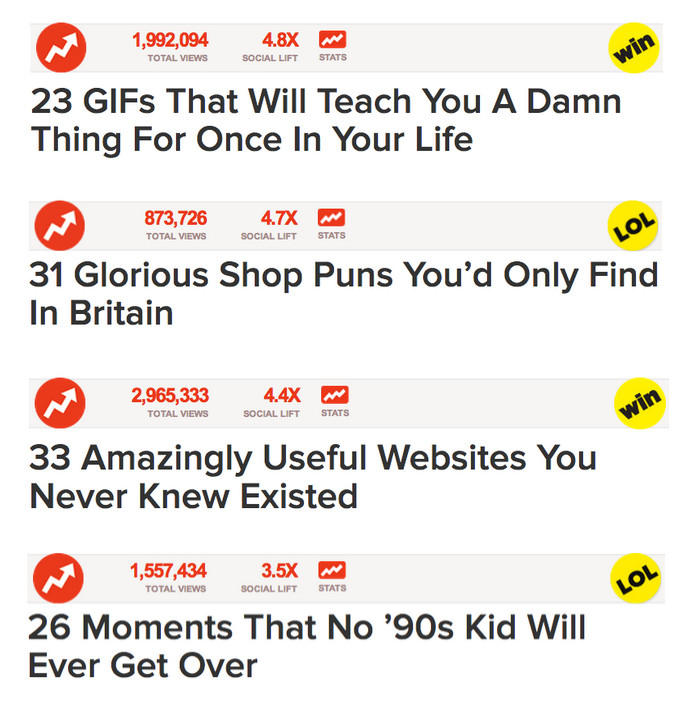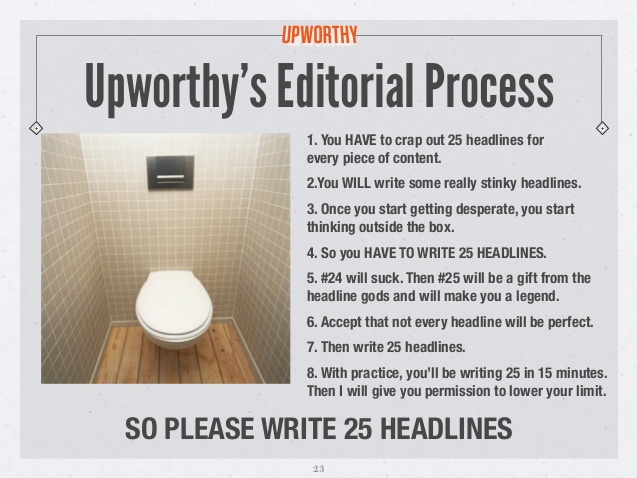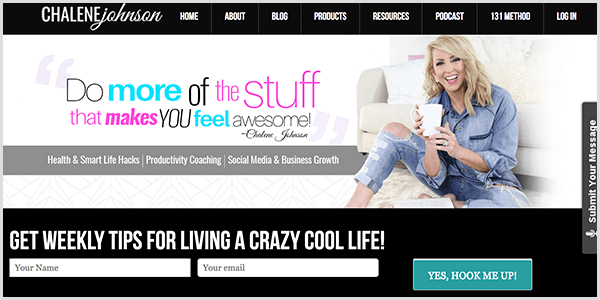 Many of us have read a ton of articles that discuss and offer suggestions on how to write better headlines, opening sentences, or subheads, for example. Most smart marketers would agree that these are all important lessons to remember, but it’s vital not to assume that copywriting techniques can only improve content by holding a readers’ attention. It takes a lot more than just headlines and subheads when it comes to crafting content that will help readers come back for more. Keep reading to learn all about three lesser-known copywriting tactics you can use to grab your audience’s attention and keep them wanting to gobble up all your content and then some.
Many of us have read a ton of articles that discuss and offer suggestions on how to write better headlines, opening sentences, or subheads, for example. Most smart marketers would agree that these are all important lessons to remember, but it’s vital not to assume that copywriting techniques can only improve content by holding a readers’ attention. It takes a lot more than just headlines and subheads when it comes to crafting content that will help readers come back for more. Keep reading to learn all about three lesser-known copywriting tactics you can use to grab your audience’s attention and keep them wanting to gobble up all your content and then some.
Make it Clear Who Your Content is For
Copyblogger discusses why it’s so important to identify your audience right away in an article. By making it clear who your content is for you’ll create a greater bond with your audience and people will continue to come back to your blog to read future content.
I bet you’ve heard this adage before:
“If you’re marketing to everyone, you’re marketing to no one.”
Yet, a lot of bloggers — especially those writing for multiple personas — don’t always qualify their readers for specific types of content.
By that, I mean:
Make it clear who your content is for — and who it is not for.
Why’s it important to do this?
Two reasons:
You’ll create a stronger bond with your target audience. People will be more likely to keep reading if they feel confident that what you have to say is tailored to folks just like them. We’re naturally more inclined to consume content that is highly relevant to our situation or how we see ourselves.You won’t frustrate readers who aren’t interested. Readers may feel misled if they read 500 words only to realize the post doesn’t apply to them.
Writtent agrees with Copyblogger and summarized the same idea very well:
One of the best copywriting techniques you can employ is to make your copy all about your reader. Know your audience, and use a writing style that will appeal to them. Most of all, be generous with the word you.
Copywriting is Dead adds to Copyblogger and Writtent’s suggestion that it’s important to make it known who your audience is by recommending speaking an audience’s language.
Speak their language. Without getting buzzword-happy, it helps to speak the language of your audience. For example, if you’re selling a complex tech product to a non-technical audience, stay away from industry nuances. Whatever the language, make sure you’re speaking like a human.
Curiosity Marketing
In order to entice readers and potential customers, Wordstream says that the curiosity gap, coined by Upworthy has everything to do with holding a reader’s attention. By teasing a reader with a hint of what’s to come they’ll be more likely to click on ads or purchase a product. They also will be more likely to come back to the site to read more on a blog or find out more about the brand.
The curiosity gap is a theory and practice popularized by Upworthy and similar sites that leverages the reader’s curiosity to make them click through from an irresistible headline to the actual content. By creating a curiosity gap, you're teasing your reader with a hint of what's to come, without giving all the answers away. The curiosity gap can be used to compel people to click on a blog post they see on Twitter, an ad on Facebook, or a marketing email in their inbox.
Wordstream explains further why using curiosity marketing techniques works for an audience and make them want to keep coming back for more.

via Wordstream
There are three primary elements that go into the curiosity gap publishing model:
Headlines
Publishing frequency
Virality
Let’s take a look at each.
The Curiosity Gap in Headlines
Arguably the most important element in the curiosity gap technique is the headline.
Upworthy is famed for its approach to headlines. The site requires all writers to devise at least 25 headlines per article, regardless of its length, topic, or angle.
This is a lot harder than it sounds.

via Wordstream
Headlines have to be almost literally irresistible. They have to entice us in mere seconds (or less), and as such must balance information with intrigue; they have to tease just enough about the article to not only tempt us to click through, but also to give us enough information to decide whether the article is likely to be of interest to us in the first place.
Put another way, headlines have to be specific enough to entice the reader, but not so specific that the reader doesn’t need to click through.
Social Media Examiner agrees that curiosity is a powerful way to marketing to readers and provides health and fitness guru Chalene Johnson’s curious techniques as a powerful example.
Why Is Curiosity a Powerful Concept?
People want to connect the dots, and when they can’t, their curiosity is powerful and motivating. For example, when a child can’t see what’s under the bed, they imagine something’s under there. In business, your goal is to get people’s attention, maintain it, and engage with them. Curiosity can help you accomplish those goals.
Nowhere is keeping people’s attention more challenging than on TV, where you see shows like Storage Wars pique viewers’ curiosity before cutting to a commercial. Storage Wars is a cable TV show where abandoned storage units are auctioned off. Sometimes they’re filled with nothing; sometimes they’re filled with amazing treasures.
To keep you engaged, just before the show cuts to commercial, the door on the storage unit slides up so you can glimpse inside. Then you’re left wondering, “Was the unit a bust or was there something valuable in it?” Chalene thinks it’s important to translate this tactic to marketing to keep people’s attention. The longer you have someone’s attention, the more likely you are to build trust.
Listen to the show to hear my thoughts on cliffhangers.
Chalene’s Strategy

Chalene’s strategy for curiosity marketing is built on authenticity, growing your community, and asking questions. To make these concepts easy to remember, she has a phrase for each part of her strategy.
Borrowed Words Are for the Birds: When the language in your copy or social media video uses someone else’s language, your words don’t feel authentic. Only the words that you use feel natural. When someone’s being inauthentic or they’re uncomfortable, it’s so easy to identify. This comes across especially on video, even if viewers register the effect only on a subconscious level.
Don’t Tell Me You Plan to Sell to Me: Right now, a big mistake marketers make is obviously gearing up for the sale. Or the sale is the first thing that viewers see because marketers lead with their product, disappear, and then suddenly return to the news feed for another a launch or promotion. With this approach, you’re like a fair-weather friend. To keep your audience’s attention, be consistent.
Likes Wear Thin; Questions for the Win: When you’re creating content, focus on what will make people curious or intrigued 80% of the time. Your goal is for your audience to ask questions and engage in meaningful conversation. Don’t worry about likes or shares.
For instance, Chalene saw a woman post a photo of herself in a really cute workout outfit. Her body looked amazing, and in her post, she wrote about how she had transformed her body. She included details about the program she used, how long it lasted, and how people could click the link in her bio to purchase it.
Solve a Problem
Copyblogger discusses another incredible copywriting technique which is to hold a reader’s attention you need to solve a problem and you can do that using a problem-agitate-solve formula. The author goes into specifics and provides an example on how he did that for his clients:
Take the Problem-Agitate-Solve formula for example.
The formula works like this:
Identify a problem
Agitate that problem
Trot out the solution
Its applications are endless.
I learned this formula when I was a copy cub working for a world-famous televangelist. This woman toured the country every other week, held a three-day conference in a major city, and then hit the road again.
After each conference the production team flipped the audio and video files into cassette and VHS tapes. My job was to write descriptions for the product sleeves.
I was limited in space. About six sentences total. And, more important, I was limited in time. (I had poems to write.)
This meant I needed a fast way to knock these descriptions out.So I experimented.
Insecure? You’re not alone. Millions of people admit to being insecure. Yet, remain that way and you’ll live a life in the shadows. A life on the fringe. Always wishing, never doing. Fortunately, there’s an answer.
Then I’d introduce the televangelist’s teaching for that tape, which was the solution. Worked like a charm.
Sources: Copyblogger, Copywriting is Dead, Writtent, Wordstream, Social Media Examiner, Copyblogger
CHALLENGE Yourself to Profit!
Free Download: Build Your Profit-Generating Online Business With This Free Blueprint
Sign Up, follow the easy steps and You'll get the tactics, strategies & techniques needed to create your online profit stream. It's free!
[adrotate group=”6″]
[adrotate group=”5″]

